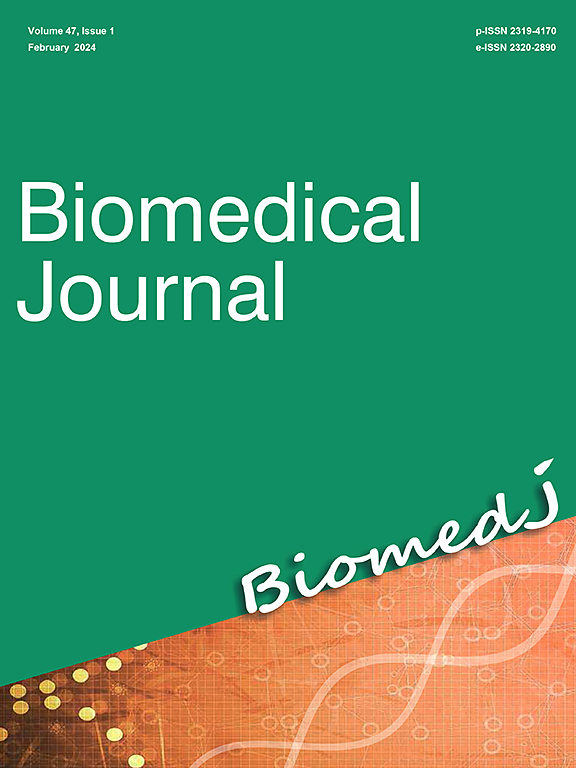Advancements in chondrocyte 3-dimensional embedded culture: Implications for tissue engineering and regenerative medicine
IF 4.1
3区 医学
Q2 BIOCHEMISTRY & MOLECULAR BIOLOGY
引用次数: 0
Abstract
Cartilage repair necessitates regenerative medicine because of the unreliable healing mechanism of cartilage. To yield a sufficient number of cells for transplantation, chondrocytes must be expanded in culture. However, in 2D culture, chondrocytes tend to lose their distinctive phenotypes and functionalities after serial passage, thereby limiting their efficacy for tissue engineering purposes.
The mechanism of dedifferentiation in 2D culture can be attributed to various factors, including abnormal nuclear strength, stress-induced mitochondrial impairment, chromatin remodeling, ERK-1/2 and the p38/mitogen-activated protein kinase (MAPK) signaling pathway. These mechanisms collectively contribute to the loss of chondrocyte phenotype and reduced production of cartilage-specific extracellular matrix (ECM) components.
Chondrocyte 3D culture methods have emerged as promising solutions to prevent dedifferentiation. Techniques, such as scaffold-based culture and scaffold-free approaches, provide chondrocytes with a more physiologically relevant environment, promoting their differentiation and matrix synthesis. These methods have been used in cartilage tissue engineering to create engineered cartilage constructs for transplantation and joint repair.
However, chondrocyte 3D culture still has limitations, such as low viability and proliferation rate, and also difficulties in passage under 3D condition. These indicate challenges of obtaining a sufficient number of chondrocytes for large-scale tissue production. To address these issues, ongoing studies of many research groups have been focusing on refining culture conditions, optimizing scaffold materials, and exploring novel cell sources such as stem cells to enhance the quality and quantity of engineered cartilage tissues.
Although obstacles remain, continuous endeavors to enhance culture techniques and overcome limitations offer a promising outlook for the advancement of more efficient strategies for cartilage regeneration.
软骨细胞三维嵌入培养的进展:组织工程和再生医学的意义》。
软骨修复需要再生医学,因为软骨的愈合机制并不可靠。为了获得足够数量的细胞用于移植,必须对软骨细胞进行扩增培养。然而,在二维培养中,软骨细胞在连续培养后往往会失去其独特的表型和功能,从而限制了其用于组织工程的功效。二维培养中的去分化机制可归因于多种因素,包括核强度异常、应激诱导的线粒体损伤、染色质重塑、ERK-1/2 和 p38/介原激活蛋白激酶(MAPK)信号通路。这些机制共同导致了软骨细胞表型的丧失和软骨特异性细胞外基质(ECM)成分生成的减少。软骨细胞三维培养方法已成为防止软骨细胞发生去分化的有前途的解决方案。基于支架的培养和无支架方法等技术可为软骨细胞提供更贴近生理的环境,促进其分化和基质合成。这些方法已被用于软骨组织工程,以创建用于移植和关节修复的工程软骨构建体。然而,软骨细胞三维培养仍有其局限性,如存活率和增殖率低,以及在三维条件下通过困难。这表明,要获得足够数量的软骨细胞用于大规模组织生产还面临挑战。为了解决这些问题,许多研究小组一直在研究如何改进培养条件、优化支架材料以及探索新型细胞来源(如干细胞),以提高工程软骨组织的质量和数量。尽管障碍依然存在,但不断改进培养技术和克服局限性的努力为推进更有效的软骨再生策略提供了美好前景。
本文章由计算机程序翻译,如有差异,请以英文原文为准。
求助全文
约1分钟内获得全文
求助全文
来源期刊

Biomedical Journal
Medicine-General Medicine
CiteScore
11.60
自引率
1.80%
发文量
128
审稿时长
42 days
期刊介绍:
Biomedical Journal publishes 6 peer-reviewed issues per year in all fields of clinical and biomedical sciences for an internationally diverse authorship. Unlike most open access journals, which are free to readers but not authors, Biomedical Journal does not charge for subscription, submission, processing or publication of manuscripts, nor for color reproduction of photographs.
Clinical studies, accounts of clinical trials, biomarker studies, and characterization of human pathogens are within the scope of the journal, as well as basic studies in model species such as Escherichia coli, Caenorhabditis elegans, Drosophila melanogaster, and Mus musculus revealing the function of molecules, cells, and tissues relevant for human health. However, articles on other species can be published if they contribute to our understanding of basic mechanisms of biology.
A highly-cited international editorial board assures timely publication of manuscripts. Reviews on recent progress in biomedical sciences are commissioned by the editors.
 求助内容:
求助内容: 应助结果提醒方式:
应助结果提醒方式:


